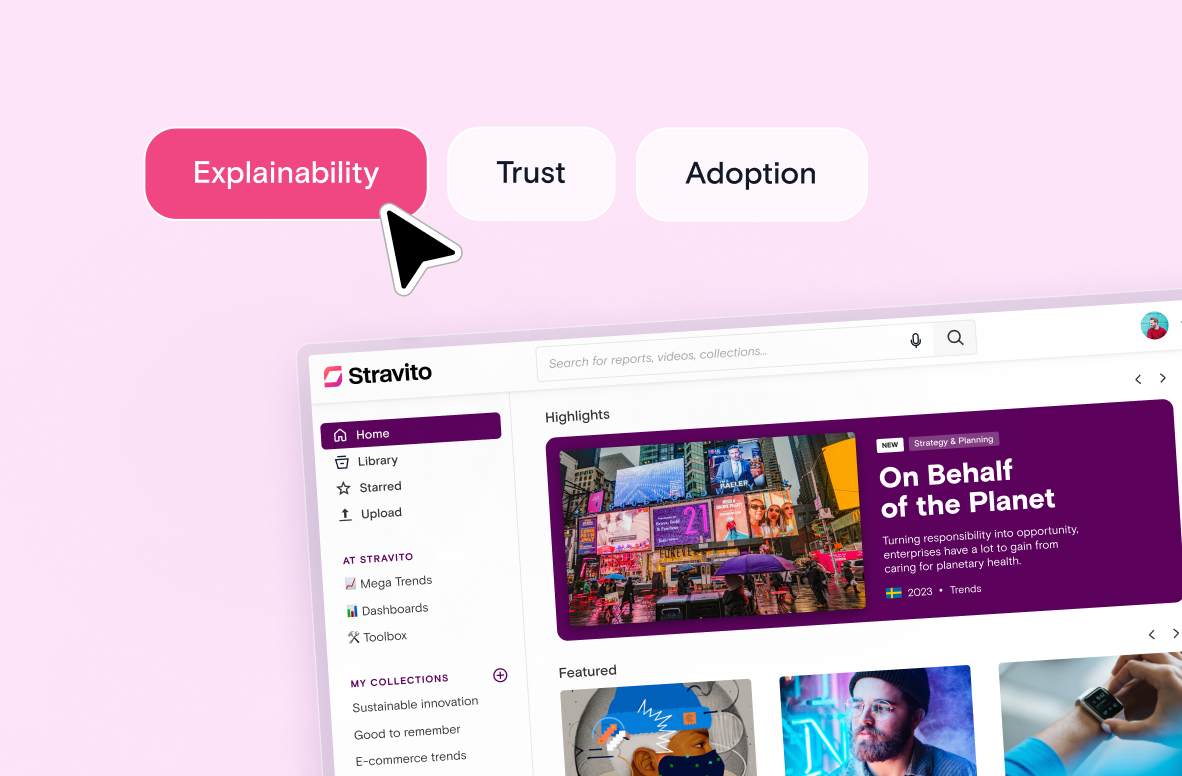As consumers, we’re increasingly encouraged to increase the lifespan of our purchases. Whether that’s washing clothes at a lower temperature, putting leftovers in the freezer, or making sure to spray new shoes with water protectant spray, there are a multitude of ways.
And when it comes to insights, the same basic principles apply. By taking care of your insights, you can ensure that they last longer, reach more decision makers, and deliver the maximum return on investment.
In this article, we’ll cover different ways to help your insights make a sustained impact.
Method 1: Centralize and curate your insights
If you do nothing else, prioritize this.
In order to get any value from your insights, they should be easy to find and access. On a foundational level, this means designating a single location, like a centralized repository, to store all of your insights. Otherwise, you risk increasing the time from insight to action.
But centralizing is only one part of the equation – it’s also essential to be thoughtful about how your insights are organized. Relying on antiquated folder structures is a great way to ensure that insights don’t get used.
Think about it this way – how many times have you looked in your closet and felt like you had nothing to wear? Or opened a fridge that’s full of food and felt like there somehow wasn’t anything to eat?
When items are thrown in haphazardly, you’re likely to find yourself finding a new shirt with the tags still on it years after purchase, or worse that container of leftovers that’s been at the back of the fridge for months (that you don’t dare open now).
That’s why it’s essential to organize and curate your insights in a way that aligns with your company goals and stakeholder needs. Perhaps you position your newest research first, group items by topic/region/business area, or create a monthly newsletter that keeps insights in circulation.
While this all might seem obvious, for many companies it’s a lot easier said than done. Investing in an insights repository that offers automated curation functionalities (like AI-powered content recommendations), can help minimize the admin required to keep your insights circulating long after they’ve been published.
Method 2: Share insights in a way that makes them memorable
But it’s not just about making insights easy to find and access – it’s also important to think about how insights are being communicated to different stakeholders. Because that is what will help determine whether or not those insights are remembered and applied to decision-making when it really counts.
One way to approach this is to map out your organization’s specific needs using the 5 Dimensions of Knowledge Sharing. This approach can help you to tailor your communication to different stakeholders, depending on what you’re communicating, when you’re communicating, why you’re communicating, and whom you’re communicating to.
If you’re short on time and resources, another great way to make sure your insights are remembered across stakeholder groups is to tell cohesive stories. Remembering details becomes significantly easier to do when those details are organized into cohesive narratives.
Plus, it makes the whole experience more fun, which is key for intrinsic motivation and fostering a sense of curiosity. Playing into those dynamics can help to ensure that insights stay salient, helping to build a company culture that elevates insights.
Method 3: Combine existing insights in new ways to shift your perspective
We typically think of innovation in a context of growth – the next groundbreaking idea that will revolutionize an industry.
But what about innovation as a way to conserve? As a way to extend the life of insights by combining them in novel constellations or contexts, to conserve resources, without sacrificing inspiration or results?
Consider Top Gun: Maverick, which is the highest grossing film of 2022 and one of the highest grossing films of all time, having earned over $1.4 billion USD worldwide (at the time of writing).
Aside from its box-office performance, there isn’t necessarily anything groundbreaking about Top Gun: Maverick. A sequel to the 1986 classic Top Gun, the film naturally incorporates many of the same elements from the original. Returning characters, similar conflicts, and the same genre of high intensity action scenes.
But paired with refreshed storylines, continued character development, updated technology, and a plot set 36 years in the future, the film managed to tap into nostalgia while also offering audiences something fresh, attracting both existing and new fans to the franchise.
Innovation isn’t just about coming up with something new – it’s also about looking at something old in a new way.
Combining existing insights in new ways can create the shift in perspective you need to come up with your next great idea.
Recycling insights doesn't have to be difficult or boring
As Edwin Taborda, Global Head of Insights at Electrolux has wisely said:
We take a lot of care of our production lines, our robots, our machines, but also research data is an asset. And the fewer people that are exposed to it, then the lower the ROI could be.
Treating insights as assets is one of the most important things you can do when looking to make your research investments go farther. Making sure that your insights are easy to access, communicated in compelling ways, and recombined to tell fresh stories are all strategies that you can use to extend their impact and lifespan.
Recycling your insights doesn't have to be difficult or boring. With the right mindset, processes, and tools, you can reduce costs, increase productivity, and give your insights new life.
Want to learn how to make recycling insights easy, fun, and engaging?
Learn how Stravito's new feature Scrapbook can help you do just that in this 15 minute product masterclass.




